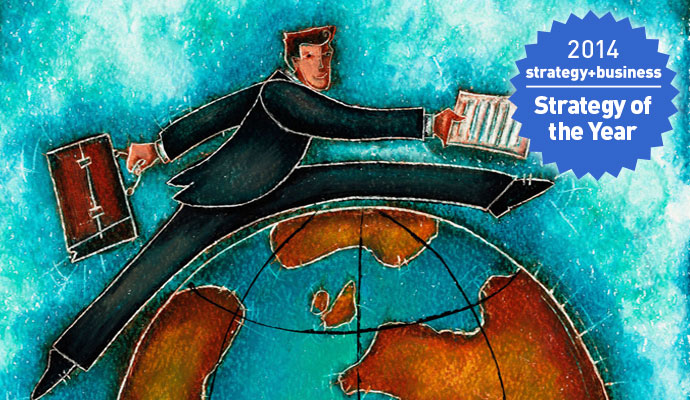Why Leaders Who Listen Achieve Breakthroughs
True two-way conversation can break the cycle of ineffective communication.
As a leader, communicating can sometimes feel like Groundhog Day. No matter how hard you try to get your message across, it is all too easy to find the next day that you face the same blank stares, predictable objections, and questions that indicate that you failed to make it stick — that people just aren’t getting it. One reason leaders find themselves in this cycle is that their approach to communication is based on an outdated mental model. It’s a model best described as a “post office.” They view themselves as the sender of a message and others as the receivers. If problems arise, leaders look for disruption somewhere along the route.
The post office model focuses most leaders’ attention on the sending process, rather than the give-and-take of effective conversations. Even if they invite people to ask questions and truly value their buy-in, these leaders are still preoccupied with their message. This leaves them ignorant about the larger context and reality on the ground, including emerging issues and game-changing opportunities. In the extreme, thinking in terms of the post office model causes leaders to make decisions in isolation or miss the early warning signs of dysfunctional momentum.
By contrast, true two-way conversations reflect a more open, balanced, and reciprocal sharing of perspectives. Here, communication is approached as a puzzle or a collage, with each person holding a critical piece. The purpose is not to deliver the perfect message or to win people over, but to explore an issue or opportunity together — pooling observations and data, raising and testing assumptions, and creating new ideas out of the mix. Picture a top technical team diagnosing a malfunctioning server. No one lectures. Instead they tell stories, triangulating what they know to form a more complete and coherent picture of the problem, enabling them to fix the machine.
Two-way dialogue is so powerful for creating breakthroughs that the deliberative democracy movement relies on it for helping citizens in polarized communities break out of gridlock. High-reliability organizing expert Karl Weick discovered that sharing perspectives and experience are important vehicles for the organizational “sensemaking” that reduces the risk of catastrophe. Although many leaders have personally experienced the power of this type of dialogue, few have mastered the art of initiating it. The following strategies can help.
Slow down. If others find you stressed, overloaded, or distracted, they will avoid disrupting your fragile focus. By slowing down and being truly present, you create the opportunity for people to come to you with new information, questions, or ideas.
Create a safe space. Harvard Business School professor Amy Edmondson’s work shows how important it is to create psychological safety, if you want to explore diverse views and foster ideas. Try setting a comfortable, informal tone and modeling openness — by honestly sharing some of your own questions, doubts, or uncertainties, and inviting others to speak early on. Watch out for triggers and reactions. Instead, adopt an attitude of curiosity, noticing and exploring your assumptions.
Ask inviting questions. Questions help you focus a conversation without limiting creativity. One 2004 study, by Boston University assistant professor Emily Heaphy (then at the University of Michigan) and consultant Marcial Losada, found that high-performing teams asked 22 times more questions than low-performing teams. Try asking questions that pose a puzzle for which you do not have an answer, such as, “How might we accelerate innovation, so we are ready for X?” If people do not engage immediately, allow the silence to linger a bit or try broadening your question by asking, for example, “What do I need to understand about our innovation process?”
Listen with a willingness to be influenced. The best way to improve communication is to focus on the listening part. How much time do you (really) allow for listening to others and what they want to discuss? When you create time and listen with an open mind, you bring out others’ confidence and encourage them to share their questions, needs and ideas. And as you learn more about their mental models, you can frame your ideas more effectively.
Questions help you focus a conversation without limiting creativity.
Use reflection to deepen the learning. You can build the skills for dialogue by periodically pausing to reflect on your conversation. Simply ask people to call out what is working and ways the group might engage more effectively. To reduce barriers to trust, you might gently ask, “Is there anything that would make it easier for people to contribute on this topic?”
Summarize and ask for commitment. Because two-way conversations are usually wide-ranging, it is very important to recap what was discovered, where you are now, and what is needed next. Where relevant, this is an excellent time to ask for commitments that move the ball forward.
When leaders engage with a willingness to be influenced, others are more open to being influenced.
In the end, the real magic of two-way conversations is that they break the cycle of predictable, ineffective communication, replacing it with fresh thinking and actionable solutions. When leaders engage with a willingness to be influenced, others are more open to being influenced as well. When leaders are genuinely interested in what others are seeing, thinking, and feeling — not as a way to get buy-in, but because the group has information and insights they need — they make better decisions. And such leaders are more likely to earn the buy-in of those involved, because everyone sees the merits of the plan.
One leader I worked with, frustrated after multiple attempts to get her team aligned on a new direction, finally asked her team members over dinner, “Do you think we should just give up on getting this right?” She wasn’t suspending her responsibility; she honestly wanted their views. At that moment, her team stepped up to a new level of ownership, outlining what made sense, and where they wanted to modify the plan to get to the goal. A year later, her highly successful team pointed to this conversation as the moment when their mission caught fire.







